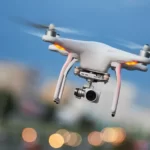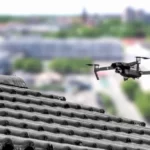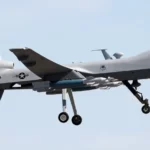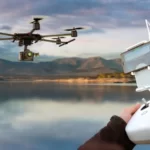Drone is a general term that relates to remote controlled pilotless aircraft such as planes, helicopters and quadcopters. The term ‘Drone’ is a colloquial term that came about as a comparison to male worker bees that hum along doing their job in a seemingly mindless fashion. Drones may also be referred to as UAV’s (Unmanned Aerial Vehicles), UAS (unmanned Aircraft system), quadcopters (having four rotary blades) and Hexcopters (having 6 rotary blades). Anything weighing less than 25kg is considered a miniature UAV, and these are the most common types owned by recreational users.
Most recreational drones will run on Li-Po, or lithium-polymer batteries which makes them convenient to charge and relatively light allowing them to fly for around half an hour. Serious enthusiast will often carry multiple battery packs as back-ups for when the first ones run out. There has been research into commercially viable solar drones however they are mostly still in development stages. Keep your eye out for developments in the near future.
To get started a recreational drone can cost anywhere between AUD $35.00/ USD $27.00 and AUD $5,240.00/ USD $4,000.00 depending on your budget. If you’ve never flown one before it’s best to start at the cheaper end of the market until you get the hang of it. Otherwise you’re likely to crash it and damage it, wasting your money. Once you’ve got the grasp of the controls you can upgrade to a better quality model. At the higher end you’ll be able to get additional and better quality features like an improved camera for film and photography, longer battery life for greater flight time, auto-stabilisation, greater range and even a barometer for weather readings.
Terminology and Acronyms
Drone enthusiasts seem to love their acronyms. Here’s some terminology you’ll need to know before you get started;
- UAV: Unmanned Aerial Vehicle
- UAS: Unmanned Aircraft system
- RPA: Remotely Piloted Aircraft
- RCA: Radio Control Aircraft
- RTF: Ready To Fly. As it sounds, you buy it, get it out of the box and off you go. (After charging the battery of course)
- BNF: Bind and Fly. Requires some assembly and basic knowledge before you can use it.
- DIY: Do it yourself. As the name suggests you’re essentially building your own vehicle. Only suited to veterans that know what they’re doing. The benefit here is that you can build a custom drone if you need to replace a part you can without replacing the whole drone, however if you don’t know what you’re doing you could spend a lot of time and money and not have a working drone capable of flying in a straight line.
- Multi-Rotors: Drones that are designed using multiple propellers such as quad copters as opposed to traditional helicopters that have one propeller.
- GPS: Global Positioning System. An electronic system using satellites that determines geographic position. Some GPS programs allows you to track flight paths, speed and record the distance travelled.
- MCU: Motor Control Unit. Communicates with the propellers to give your device stability and allows control over speed, and direction.
- MAV: Micro Air Vehicle. The babies of the family weighing less than 1kg
- FPV: First person view. Used to describe video feed from drone cameras.
- Failsafe: Most drones have a ‘failsafe’ that tells them to turn around and come back to base if they lose signal with your controlling device.
- YAW: Describes the motion or steering in relation to the vertical axis. The act of directing your aircraft to tilt or twist in order to move in a certain direction. (Imagine standing still in an upright position and only turning your head to the left or right)
- Lift: refers to your vertical accent or moving in an upwards direction.
- Thrust: is your forward movement.
- SLAM: Simultaneous localization and mapping. This is similar to your GPS in your car that shows you where you are on the map except it shows your drones location in dimensions. It also tells you drone where it is so it knows not to crash into the ground.




